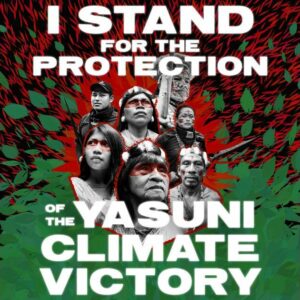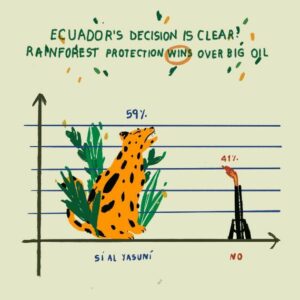Does the State Have the Dignity to Keep Its Word?
Ecuador’s Failure to Respect the Right to Education in the Amazon
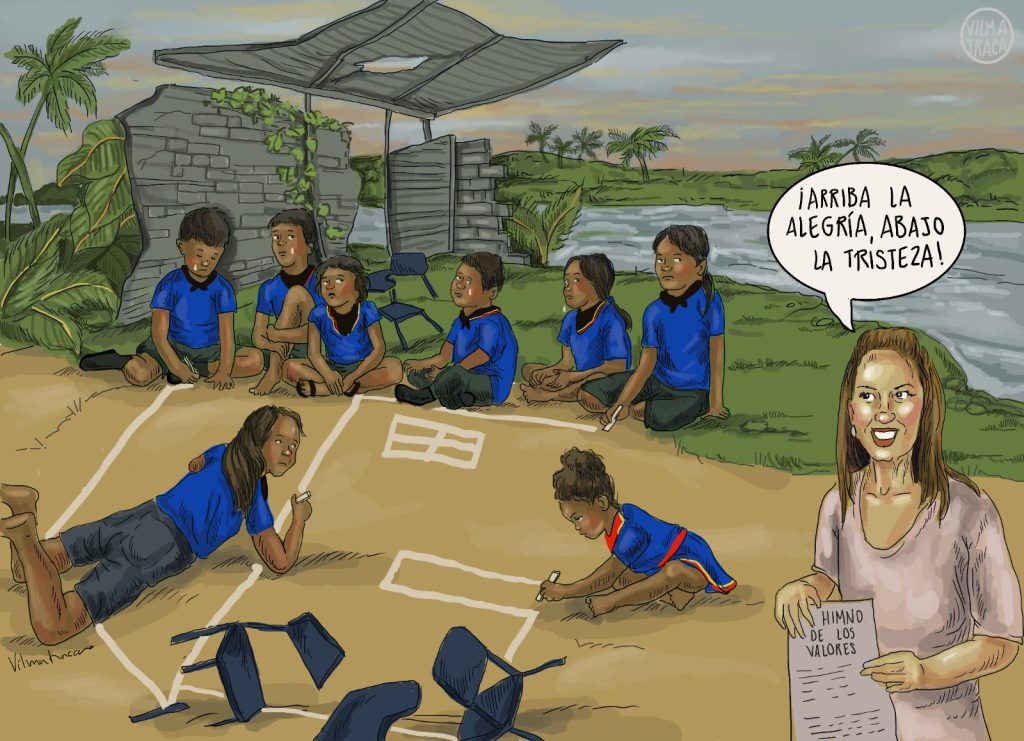
Illustration: Vilmatraca
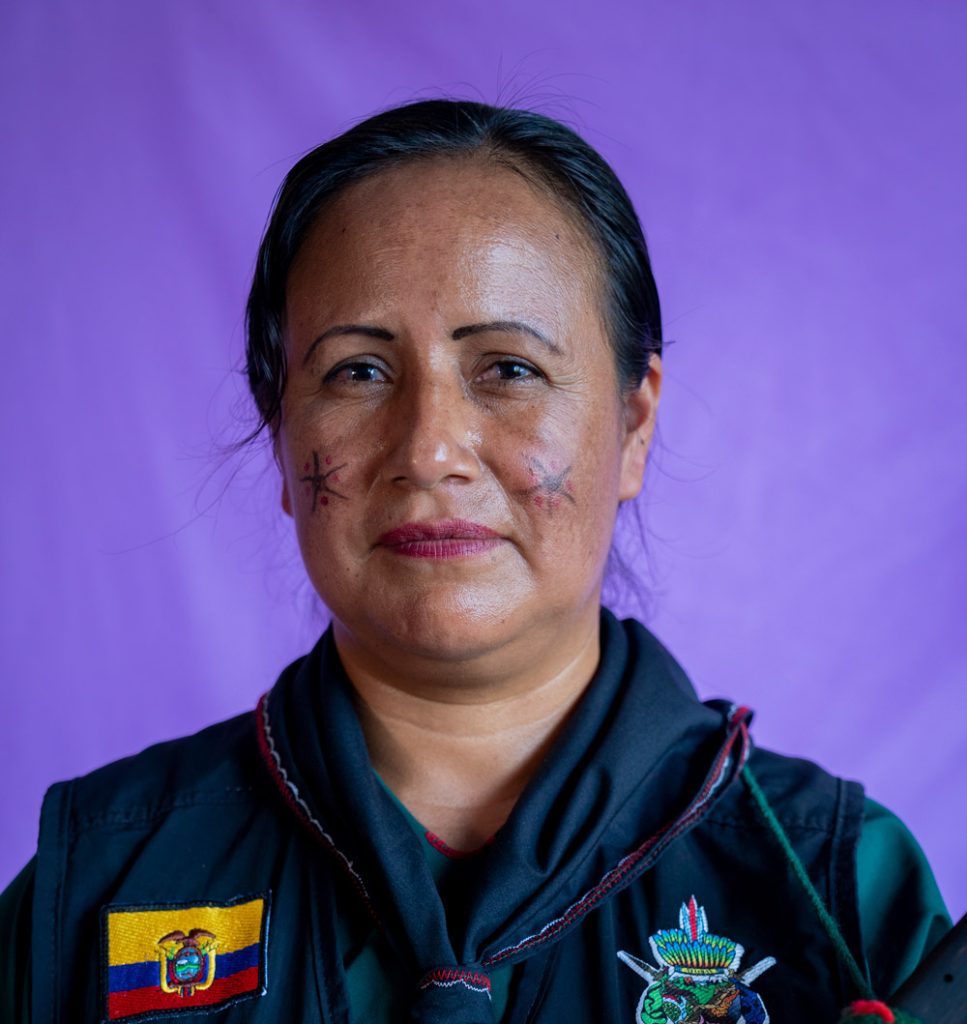
By Erika Narváez, a member of the Indigenous A’i Cofán community of Sinangoe
- The A’i Cofán community of Sinangoe has been waiting 6 years for the State to reconstruct their damaged school.
- The community is spearheading a struggle to demand justice and advance Indigenous rights before Ecuador’s government, including basic rights such as the right to education.
- As part of this struggle, the A’i Cofán are incorporating their own cultural practices into education as well; transferring knowledge to the next generation, decolonizing learning, and teaching youth how to defend their culture and the rainforest.
- This is one flashpoint in the larger Indigenous movement in the Amazon to defend rights, from education to self-determination, which are vital for each Indigenous community to survive, thrive, and protect their ancestral homes and cultures in the rainforest.
I was born and raised in the A’i Cofán community of Sinangoe, located in the heart of the Ecuadorian Amazon. Here, the river is our highway, the forest our supermarket, and the community our source of strength. The forest teaches us how to live and how to care for it. But here too, amid such natural wealth, our children have been denied one of the most basic rights: a school to learn in.
This struggle began six years ago, when the Río Cofanes school closed in 2019. Erosion from the Aguarico River swept away the sports area as well as the school infrastructure, making it dangerous for our children. To start the reconstruction of the school, we sent letters to the school district and UNESCO. We traveled to the Ministry of Education in Quito. We received promises and more promises, excuses and more excuses.
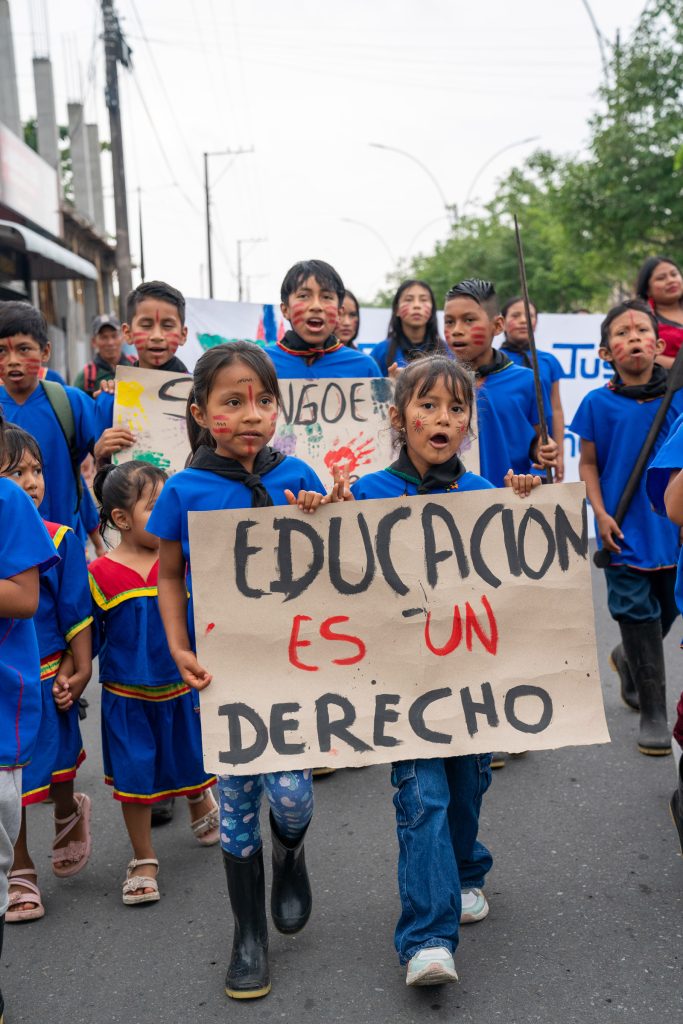
Photos: Michelle Gachet
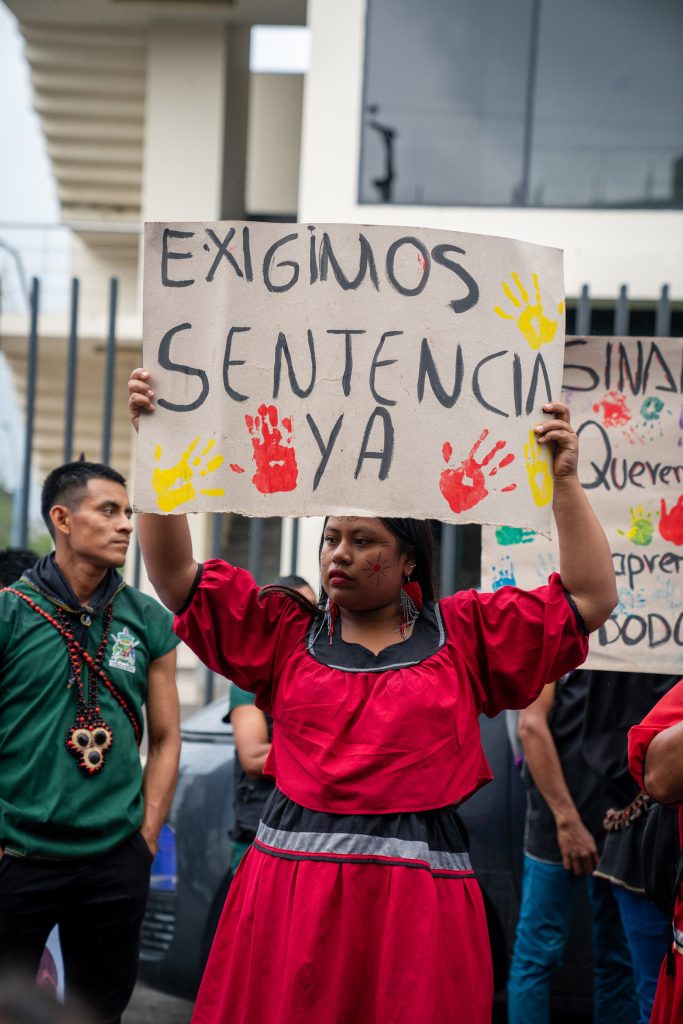
Time passed, and our patience ran out. On July 10, 2024, we sued the Ministry of Education and the Secretariat of Intercultural Bilingual Education (SEIBE), before the local court. A month later, on August 14, 2024, the court ruled clearly in our favor: the State was ordered to build a school according to our needs. We celebrated with tears and hugs, thinking our long wait was over.
But for Indigenous Peoples, it seems that court rulings are just paper. One year later, nothing has changed. Our children continue to study in makeshift communal houses, in warehouses, in a field, and in a small building belonging to our women’s association.
The children finished another school year without an adequate space for learning. Some have grown up without knowing what it’s like to have a school of their own. Others, to continue to high school, must travel by canoe and then by car to other schools far from home. This journey is not only tiring and expensive, but it also exposes them to danger and steals hours of their childhood.
As a member of this community, it pains me to see how the young people are affected. They have marched alongside us, listened to our meetings, and learned to speak out. And today, they feel sadness and anger. They feel abandoned and discriminated against by the authorities. They see how children in other communities have classrooms, sports fields, and school supplies, while they study in makeshift spaces. When they visit other schools and see complete facilities, they feel what it means to be invisible.
But we, as a community, have refused to let this wound fester. We joined together to create Semilleros de Guardia—a program for our children, where elders teach them about traditional medicine, stories, crafts, the values of our culture, and the Indigenous Guard. In this way, our children learn things that aren’t found in books, things that belong to them by inheritance. Nonetheless, these activities don’t replace the young people’s right to a formal, quality education in a decent environment.

Photo: Michelle Gachet
The Ministry of Education continues to present documents claiming that they have supported us with books, tables, or furniture. But the truth is that these things never materialized in any useful way. We don’t want patchwork solutions. We want the school that the court ordered to be built. Failure to comply is not just an administrative offense: it is a direct violation of the right to education and a sign of the State’s neglect and abandonment of Indigenous communities.
A public apology is being planned in Sinangoe. But we don’t need empty apologies. We need a start date for construction, we need the first stone to be laid for the school building. An apology without a real commitment is a mockery.
Our children deserve the same things as children in Quito, Guayaquil, or any city: a place to learn and grow without feeling that their cultural background is a disadvantage. As members of the A’i Cofán people, we want our children’s education to be rooted in our culture and also wide open to the world. We want them to be able to dream without having to abandon their identity.
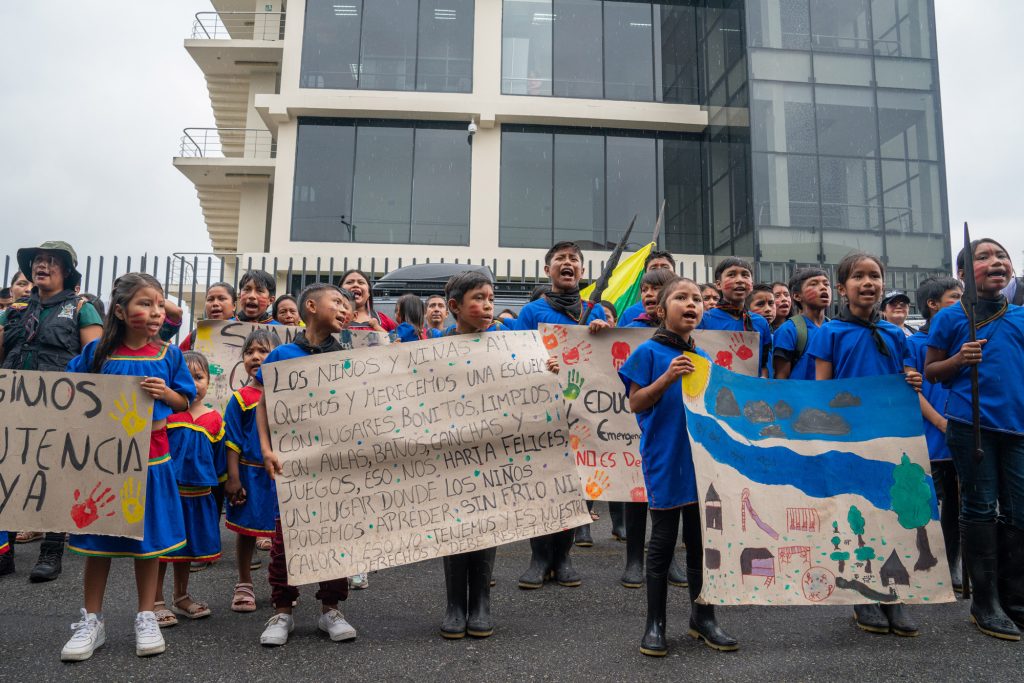
Photo: Michelle Gachet
Today, what we’re asking for isn’t charity. It’s justice. It’s not a favor, it’s a right. We’ve shown that we know how to defend ourselves in the courts, in the streets, and the forest. But we shouldn’t have to continue fighting year after year for something that the Constitution and the law already recognize.
On behalf of the families of Sinangoe, I say to Ecuador’s Minister of Education, Alegría Crespo: put your hand on your heart, comply with the Court’s ruling, and transform this story so it is no longer one of reproach. Let this story become an example of how the State can listen and act. Because if education is truly the foundation of development, then there is no excuse for it to be a privilege reserved for some and denied to others.
Our children cannot continue to wait. The forest teaches us that everything has its time. But this time, our young people’s childhoods, cannot be recovered. And every year that passes without a school is an opportunity lost forever. May history remember that Sinangoe did not give up. And may it also, one day, remember that the State had the dignity to keep its word.


